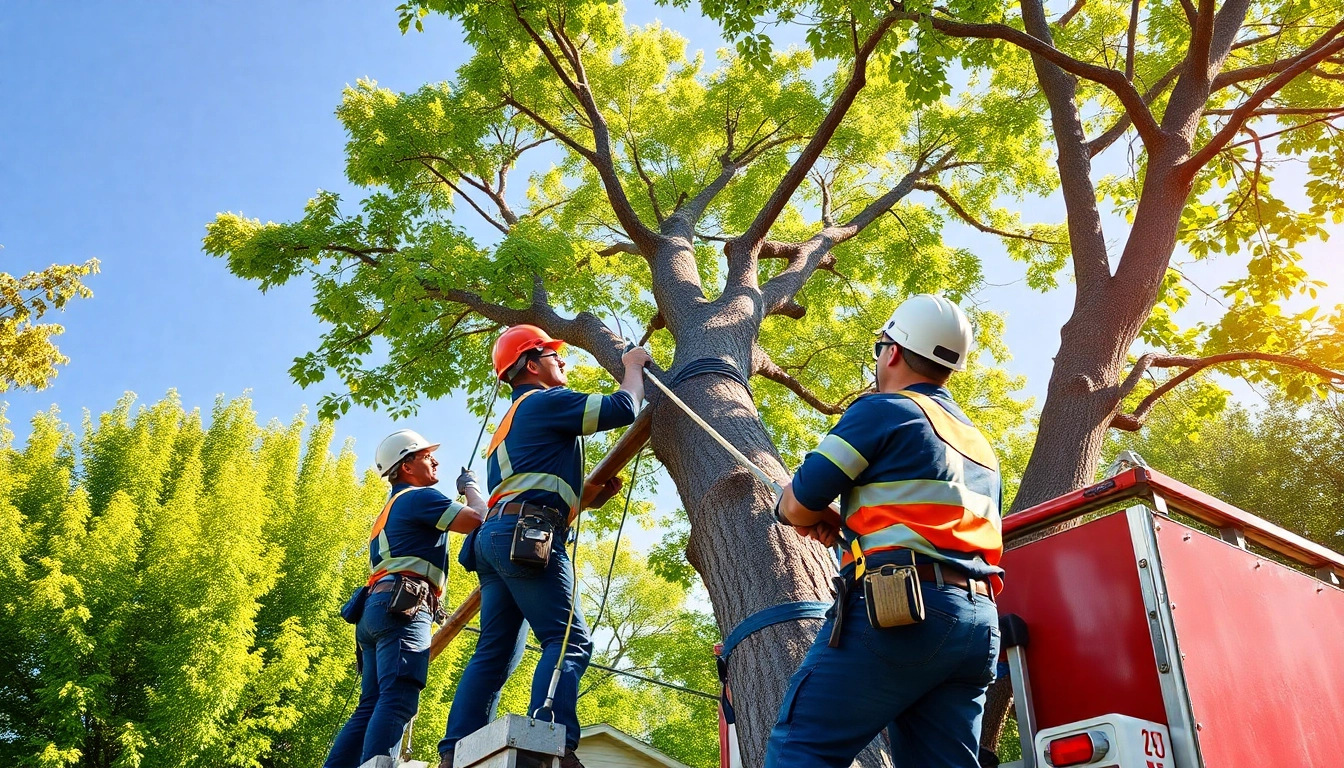Understanding Emergency Light Testing
Emergency light testing is a critical aspect of fire safety management, ensuring that emergency lighting systems function as intended during unexpected power failures or emergencies. This testing process is vital for compliance with safety regulations and for protecting lives in a crisis situation. It’s essential for organizations to conduct systematic and comprehensive Emergency Light Testing as part of their overall safety protocols.
What is Emergency Light Testing?
Emergency light testing involves the systematic evaluation of emergency lighting systems to verify their operational effectiveness. These systems are designed to provide illumination in emergencies, such as power failures during a fire or other critical situations. Testing typically includes a series of procedures aimed at confirming that batteries, bulbs, and any associated circuitry are functioning properly.
There are two primary types of tests performed: functional tests and discharge tests. Functional tests check the operational status of emergency lights at regular intervals, while discharge tests evaluate battery longevity by simulating a power failure for a specified duration.
Importance of Emergency Lighting in Safety Compliance
Emergency lighting systems are vital for ensuring safe egress from buildings during emergencies. They illuminate pathways, exits, and areas where individuals might be trapped or disoriented. Without effective emergency lighting, the risk of injury increases significantly during critical situations where every second counts.
In many jurisdictions, emergency lighting is not just a best practice but a legal requirement as outlined in safety standards such as the National Fire Protection Association (NFPA) regulations. Compliance with these standards protects not only the individuals inside the facility but also organizations from potential liabilities associated with non-compliance.
Legal Requirements and Standards for Testing
Various regulatory bodies, including the NFPA and the Occupational Safety and Health Administration (OSHA), have established strict guidelines for emergency lighting testing. For instance, NFPA 101 requires a 30-second test every month and a 90-minute test annually to ensure that system batteries are capable of providing adequate light during an emergency.
Organizations must also keep thorough documentation of their testing procedures and results to demonstrate compliance during audits or inspections. Failure to adhere to these regulations can lead to fines and other penalties, as well as increased responsibility in the event of an incident.
Emergency Light Testing Procedures
Monthly Testing Guidelines
Emergency lighting systems require consistent validation to function correctly when needed most. This begins with monthly testing guidelines outlined by the NFPA. The monthly tests typically consist of a functional assessment known as the “push to test” button. This simple action checks whether the individual fixtures illuminate properly.
Additionally, during these tests, maintenance staff should inspect the fixtures for physical damage, verify that lenses are clean, and ensure that all lights are positioned correctly to provide adequate illumination. Any discrepancy should be documented and promptly addressed.
Annual Testing Requirements
The annual testing requirements are more rigorous. They involve performing a discharge test, commonly referred to as a “90-minute test.” This test evaluates whether the emergency lighting system can operate effectively for the full duration when engaged. The test involves disconnecting the power supply and allowing the lights to operate on battery power.
During this assessment, the brightness of all emergency lights should meet the minimum illumination requirements as specified by relevant safety codes. Documentation of the results must be maintained, and any failures should lead to immediate corrective action.
Common Challenges and Solutions
Several challenges can arise during emergency light testing, including a lack of trained personnel, improper documentation practices, and logistical challenges related to accessing fixtures.
To overcome these challenges, organizations should invest in employee training programs that emphasize the importance of testing and maintenance procedures. Moreover, developing a systematic checklist for testing can mitigate risks associated with forgetfulness or oversight.
In cases where physical access to lights poses difficulties, facilities management may consider conducting testing during off-hours to ensure no disruption to operations.
Best Practices for Emergency Light Testing
Developing a Testing Schedule
Creating a comprehensive testing schedule is a cornerstone of effective emergency light management. Organizations should establish a calendar that outlines all testing procedures, frequency, and responsible personnel. Utilizing facility management software can enhance tracking and remind personnel of upcoming tests.
Consistency is critical; adhering to a predictable testing routine reassures staff members that their safety is prioritized. Additionally, regular reminders and updates can keep the testing process top-of-mind and mitigate the likelihood of missed tests.
Utilizing Technology for Efficient Testing
The integration of technology in emergency light testing can streamline processes and enhance efficiency. Systems equipped with self-testing capabilities can automatically conduct monthly and annual tests, generating logs and alerts for any discrepancies.
This automation reduces the burden on staff and ensures that testing is carried out consistently and reliably. Furthermore, employing software solutions for data management can simplify compliance reporting and audits.
Employee Training and Engagement
Investing in employee training is vital for the successful implementation of emergency light testing protocols. Employees, particularly those involved in facility management, should be well-versed in the procedures and legal requirements surrounding emergency lighting.
Engagement strategies, such as regular safety meetings and participatory drills, can foster a culture of safety and awareness. Encouraging employees to voice their concerns or share experiences related to emergency lighting systems can identify potential areas for improvement.
Emergency Light Testing Equipment
Overview of Testing Tools
Emergency light testing requires specific tools to ensure the accuracy and efficiency of assessments. These tools include multimeters for checking voltage and current, battery analyzers for assessing battery health, and testing software for documenting performance. Additionally, readily available testing devices can automate the testing process and provide instant results.
Utilizing the right equipment ensures that test results are reliable, making it easier for facilities management teams to maintain compliance with safety regulations.
Maintaining and Upgrading Equipment
Routine maintenance of emergency lighting systems is essential to extend their lifespan and functionality. Regular inspections should be conducted to identify any signs of wear and tear, corrosion, or faulty components. Following the manufacturer’s guidelines regarding maintenance schedules can prevent costly failures and replacements.
Upgrading equipment as technology advances can improve system reliability. Innovative lighting technologies, such as LED emergency lights, provide longer lifespans, increased efficiency, and lower energy consumption, making them an attractive upgrade for safety-focused organizations.
Cost Considerations for Emergency Lighting Solutions
When budgeting for emergency lighting solutions, organizations must consider several financial factors, including the initial purchasing cost, installation expenses, maintenance costs, and potential upgrades. While opting for the cheapest option may save short-term costs, investing in higher-quality emergency lighting systems often results in longer-term savings due to decreased maintenance overhead and improved reliability.
Furthermore, organizations should perform a cost-benefit analysis to gauge how proactive emergency lighting solutions can reduce liability costs and enhance safety, leading to potential insurance discounts or compliance incentives.
Measuring the Effectiveness of Emergency Lighting Systems
Performance Metrics for Emergency Lights
Evaluating the effectiveness of emergency lighting systems requires specific performance metrics. Key metrics include illumination levels (lumens), system response times, and battery life. Establishing thresholds for each metric can help facility managers quickly identify underperforming systems.
Regular performance audits should be part of the testing process, ensuring that lights not only meet but exceed the baseline requirements. This proactive approach promotes ongoing compliance and enhances employee safety during emergencies.
Gathering Feedback from Safety Drills
Conducting safety drills allows organizations to gather valuable feedback regarding the efficacy of emergency lighting systems. Feedback from staff during these drills can highlight areas for improductive, including the sufficiency of illumination and the effectiveness of egress paths.
Implementing feedback mechanisms, such as surveys or debriefing sessions post-drill, can provide insights into how systems function in real-time scenarios, informing necessary adjustments and enhancements.
Documenting Testing Results for Compliance
Documenting testing results is not only essential for compliance but also for continuous improvement. Proper records help organizations track the history of system performance, identify trends over time, and demonstrate adherence to safety regulations.
Utilizing digital management systems for documentation can enhance compliance reporting and allow for easier access to historical data. Regular reviews of testing documentation can also identify patterns that may indicate a need for systemic changes or improvements in testing procedures.



